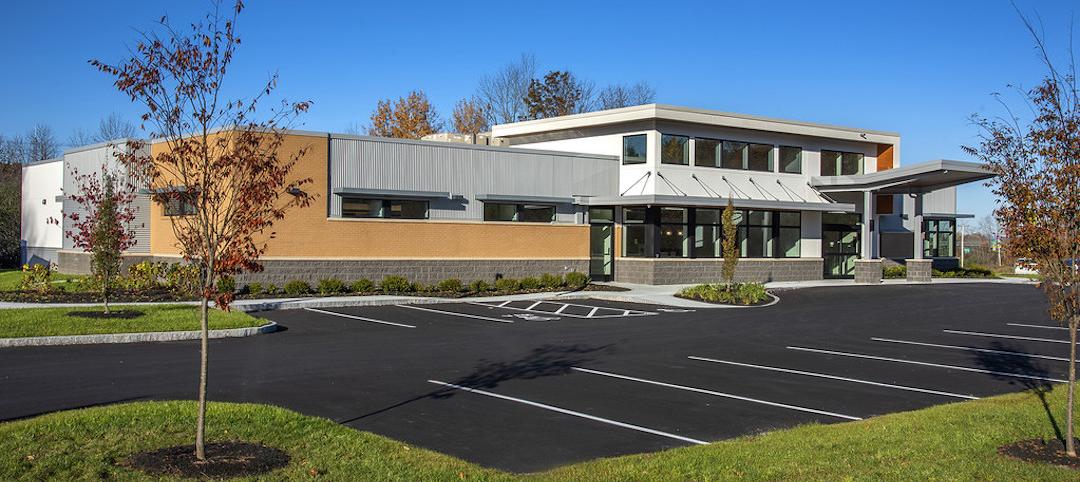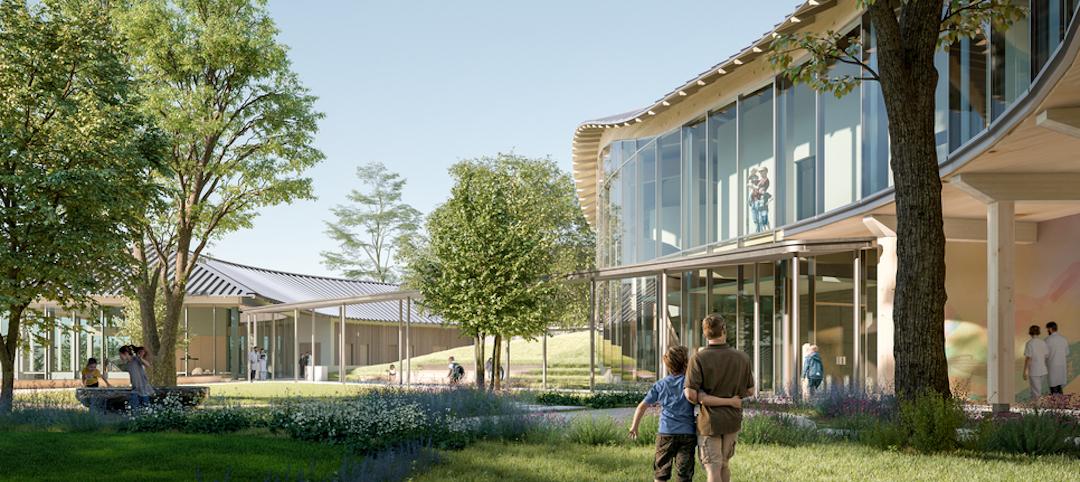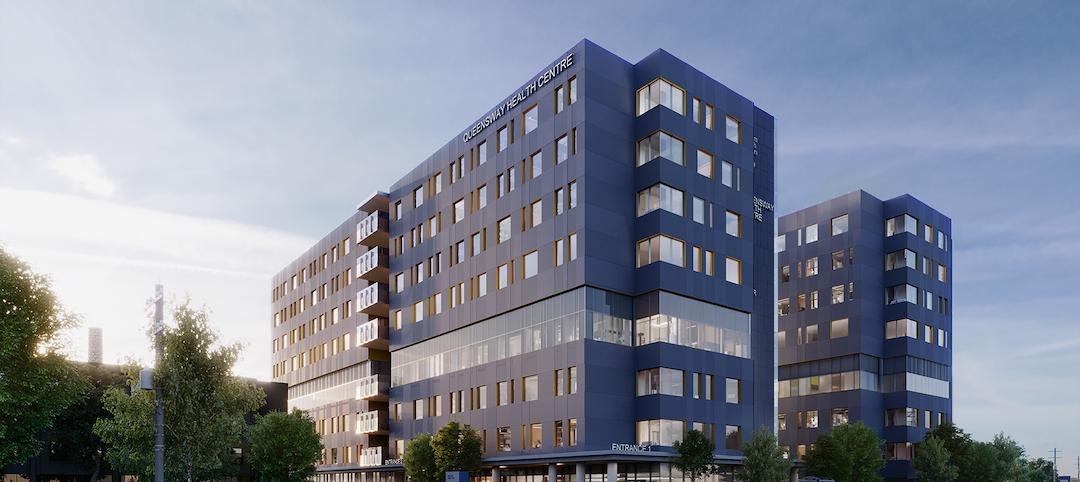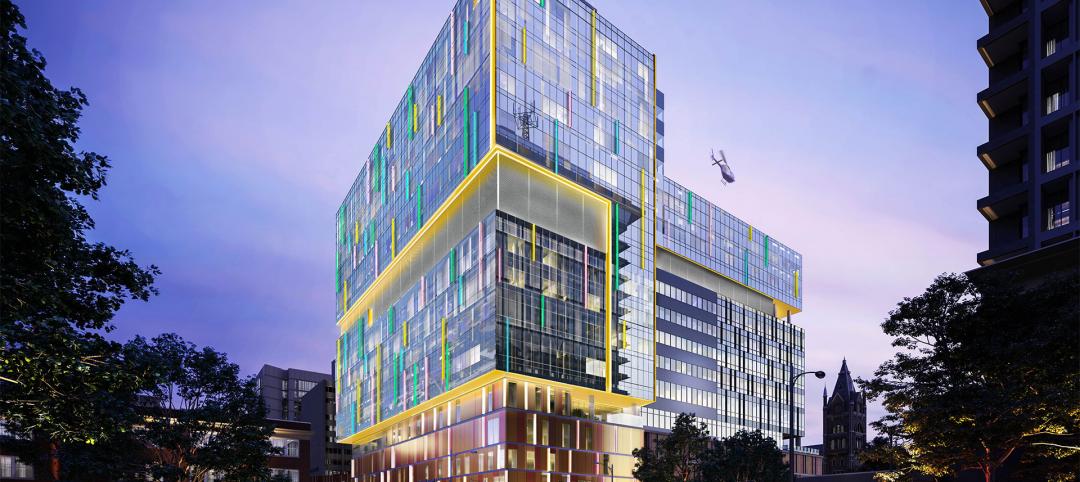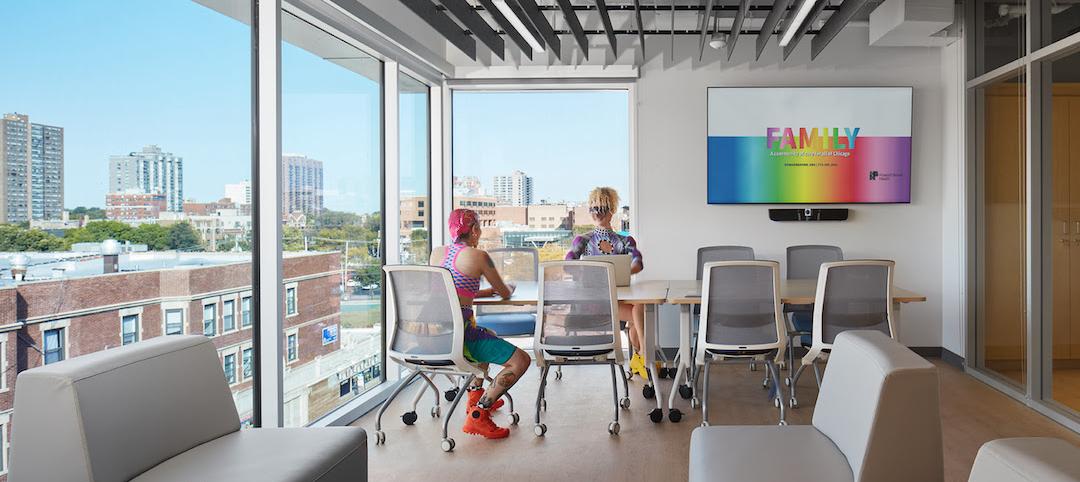Memorial Sloan Kettering Cancer Center, one of the premier cancer treatment hospitals in the world, had a problem. A recent analysis of patient volumes showed that it would run out of space for new construction at its Upper East Side campus in Manhattan in just a few years. It did own a site at East 61st Street and York Avenue, near the East River and seven blocks from its main campus at 1275 York. But the parcel was only 100 by 115 feet. On top of that, it was also within a floodplain.
MSK had never built on such a small site. “We realized that we would be developing a new paradigm,” says Suzen L. Heeley, IIDA, LEED AP, MSK’s Executive Director of Design and Construction. The design would have to take into account all support services and staff needs, since staff would be in the building for their entire shift.
The solution: go vertical. The result, devised by MSK and its architect, Perkins Eastman, is the 179,000-sf, 16-story Josie Robertson Surgery Center, which opened in December 2015.
Perkins Eastman addressed the floodplain problem by moving the mechanical systems to higher floors, “hardening” the building against flooding, says Jeffrey Brand, AIA, EDAC, Principal. Several variances were also required, including one for the surgical program, which called for uninterrupted floor plates. Operating rooms were stacked vertically on three floors, with care areas designed for specialty procedures.
Accommodating three elevators (one each for the public, patients, and service staff) reduced the floor plate to about 8,000 sf, forcing the hospital and its Building Team to come up with what Heeley calls “a new architectural and operational model.”
A key goal of the center is to limit patient stays to a few days, so encouraging patient mobility is important. (Only a small percentage of the surgery center’s patients get admitted to MSK’s main hospital.) The recovery area includes a figure-eight corridor to encourage patients to move around. They have to leave their beds to get breakfast.
The patient experience has been enhanced from admission to release, says Heeley. The waiting area features The Beehive, a reception kiosk for checking in. Patients are assigned a designated caregiver and given a location badge, which tracks their movements throughout the stay in real time. In the first six months of operation, the badges (from HealthLoop) recorded 248,000 patient touch points.
The waiting area also has “campsites,” where patients and families can gather without having to move a lot of furniture. Brand says these areas are like living rooms, with a food bar, a business center, a library, and places where children can play Wii.
Staff comforts were not ignored. The design infuses plenty of daylight throughout the core of the building. The staff-only top floor, known as The Mixing Bowl, provides food service, conference and business areas, and spaces where clinical staff can mingle informally. Other rooms include The Soap Box (for dining and meeting) and places for computer workstations.
The building has become so popular with staff members that there’s currently a waiting list of employees who want to work there.
Josie Robertson borrows many of its design and construction ideas from the hospitality sector. Perkins Eastman collaborated with the New York–based interior design firm iCrave—known primarily for its restaurant and airport work—to make the interior spaces emulate a home-recovery experience.
The walkways in the post-anesthesia care floors are filled with artwork. There’s room for patients to exercise and socialize. Wood finishes, with their soothing, organic texture, are prevalent throughout.
“We wanted something different,” says Heeley. She admits that MSK’s leadership was nervous about bringing in iCrave, but felt confident that Perkins Eastman, which has been designing for MSK for decades, had the healthcare chops to keep the project on track. Controlling the budget did take some “curating,” she says, when it came to choosing lighting, furniture, and flooring.
Heeley says that elements of the Josie Robertson concept will inevitably find their way into future MSK projects, including the 750,000-sf Robert Koch Center for ambulatory care. “We’re designing in a flexible way to be able to make changes quickly,” she says.
Related Stories
Healthcare Facilities | Feb 15, 2022
New outpatient ophthalmology surgical center opens in Newington, N.H.
JSA Design designed the project.
Resiliency | Feb 15, 2022
Design strategies for resilient buildings
LEO A DALY's National Director of Engineering Kim Cowman takes a building-level look at resilient design.
Healthcare Facilities | Feb 10, 2022
Respite for the weary healthcare worker
The pandemic has shined a light on the severe occupational stress facing healthcare workers. Creating restorative hospital environments can ease their feelings of anxiety and burnout while improving their ability to care for patients.
Coronavirus | Jan 20, 2022
Advances and challenges in improving indoor air quality in commercial buildings
Michael Dreidger, CEO of IAQ tech startup Airsset speaks with BD+C's John Caulfield about how building owners and property managers can improve their buildings' air quality.
Healthcare Facilities | Jan 7, 2022
Supporting hope and healing
Five research-driven design strategies for pediatric behavioral health environments.
Healthcare Facilities | Dec 20, 2021
Stantec will design the new Queensway Health Centre
The project is located in Toronto.
Healthcare Facilities | Dec 16, 2021
Leo A Daly designs mental health clinic for veterans in Tampa
The new facility will consolidate all mental health services the VA offers into one clinic.
Healthcare Facilities | Dec 15, 2021
COVID-19 has altered the speed and design of healthcare projects, perhaps irrevocably
Healthcare clients want their projects up and running quicker, a task made more complicated by the shortage of skilled labor in many markets.
Healthcare Facilities | Dec 15, 2021
MEP design considerations for rural hospitals
Rural hospitals present unique opportunities and challenges for healthcare facility operators. Oftentimes, the infrastructure and building systems have not been updated for years and require significant improvements in order to meet today’s modern medical demands. Additionally, as these smaller, more remote hospitals are acquired by larger regional and national healthcare systems, the first step by new ownership is often to update and rehabilitate the building. But how can this be done thoughtfully, economically, and efficiently in ways that allow the engineering and facility staff to adapt to the changes? And how can the updates accurately reflect the specific needs of rural communities and the afflictions with which these areas most commonly face?
Healthcare Facilities | Dec 7, 2021
Wheeler Kearns Architects completes Howard Brown Health’s Broadway Youth Center in Chicago
The new facility will provide medical and social service programs to LGBTQI+ youth.


